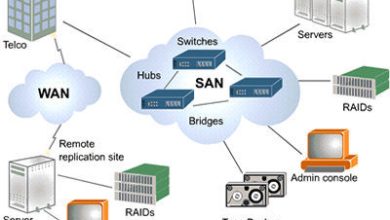What is business intelligence?

Business intelligence (BI) combines business analytics, mining, visualization, data infrastructure, and tools, plus best practices to help companies make data-driven decisions. In practice, implementing modern business intelligence means having a comprehensive view of all the organization’s data. In addition, it consists of using this data to drive change, eliminate inefficiencies and adapt quickly to changes in the market or demand.
It is important to note that this is a very modern definition of BI. Also, BI has a very short history as a buzzword. Originally, traditional business intelligence emerged in the 1960s as a system for sharing information between organizations. In the 1980s it was further developed along with computer models. It was used to make decisions and transform data into information before becoming a specific product of BI teams with IT-based service solutions. In modern BI solutions, factors such as flexible self-service analytics, data governed on trusted platforms, empowerment of corporate users, and speed to get information are prioritized with Al Rafay Global.
Examples of business intelligence
It is much more than “something” specific; is a general term that includes the processes and methods for collecting, storing, and analyzing data from business activities or operations to optimize performance. All of that comes together to create a comprehensive view of a business and help people make better and more useful decisions.
Over the past few years, business intelligence has evolved to include more processes and activities to improve performance. These processes include the following:
- Data Mining – Using databases, statistics, and machine learning to discover trends in larger data sets.
Reporting: share data analysis with stakeholders so everyone can draw their own conclusions and make decisions. - Performance Metrics and Benchmarks – Compare current performance data with historical data to track performance against targets. Generally, this is done with custom dashboards.
Descriptive analysis: use preliminary data analysis to discover what happened.
Queries: the user asks specific questions related to the data and BI extracts the answers from the data sets.
Statistical analysis: From the results of descriptive analysis, the data is further explored through statistics, for example, to determine how a trend occurred and why. - Data visualization – Transform data analysis into visual representations, such as graphs and histograms, to more easily consume data.
- Visual Analytics – Explore data through visual storytelling to share insights on the go and stay in the flow of analysis.
Data preparation: collect various data sources, identify dimensions and measures, and prepare data for analysis.
Why is business intelligence important?
Additionally, business intelligence enables organizations to make better decisions by providing current and historical data within their business context. Analysts can leverage BI to set benchmarks for performance and competition. In this way, the organization will be able to operate in a more agile and efficient way. They will also be able to more easily identify market trends in order to increase sales or revenue. When used efficiently, the right data can improve all kinds of initiatives, from compliance to recruitment.
Explore some of the alternatives that business intelligence offers companies to make smarter decisions based on data:
- Identify ways to increase profits
- Analyze customer behavior
- Compare data with competitor information
- Track performance
- Optimize operations
- Predict success
- Identify market trends
- Detect inconveniences or problems
How Business Intelligence Works
Businesses and organizations have questions and goals. To find answers and track performance against those goals, they collect the necessary data, analyze it, and determine the actions that need to be taken in order to achieve the goals.
In the technical part, raw data is collected from the activity of the company. The data is processed and stored in data warehouses. Once stored, users can access the data, which begins the analysis process to answer business questions.
How BI, Data Analytics, and Business Analytics Work Together
Business intelligence includes data analysis and business analysis. However, these makeup only part of the entire process. BI helps users draw conclusions from data analysis. Data scientists explore the specifics of data in depth. To do so, they use advanced statistics and predictive analytics to discover current and future patterns. Data analysis asks the question, “why did this happen, and what could happen next?” Business intelligence takes those models and algorithms and breaks the results down into an easy-to-understand representation.
According to the Gartner IT Glossary, “Business analytics includes data mining, predictive analytics, applied analytics, and statistics.” In short, organizations conduct business analysis as part of the larger scale business intelligence strategy. BI is designed to answer specific queries. In addition, it offers instant analysis for decision-making or planning. However, companies can use analytics processes to continually improve follow-up questions and iteration.
Business analysis should not be a linear process because answering just one question is likely to lead to follow-up questions and iterations. Instead, the process should be viewed as a cycle of data access, discovery, exploration, and information sharing. This is called the analysis cycle, a modern term that explains how companies use analysis to react to changes in questions and expectations.





